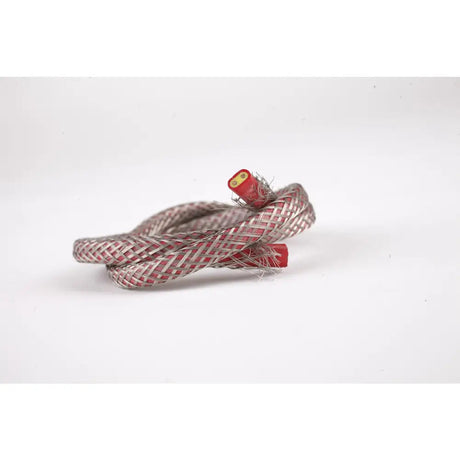Chemical Resistance of Fire-Resistant Coverings
Introduction
Have you ever wondered what keeps buildings standing tall and unscathed amidst a blaze? Fire-resistant coverings – that's the unsung hero. But, it's not just the lick of flames these coverings must endure; chemical resistance plays a crucial part too. Why, you ask? Well, let's find out.
Understanding Fire-Resistant Coverings
To wrap our heads around the nitty-gritty of these materials, we need to delve into the different types that grace our buildings.
Intumescent Coatings
Ever seen a coating puff up when it gets hot? That's an intumescent coating for you. It swells up when the heat is on, forming a char that shields the surface beneath.
Fire-Retardant Coatings
A bit like the calm cousin of the intumescent family, fire-retardant coatings release a flame-dousing gas when things heat up, slowing down the spread of fire.
Fire-Resistant Fabrics
And then there are fabrics that refuse to give in to flames. They're woven with materials that can resist catching fire, making them perfect for curtains and upholstery in need of extra protection.
Chemical Exposure in Various Environments
Chemicals are like those uninvited guests at a party – they pop up everywhere. And just like any party crasher, they can cause a mess.
Chemical Exposure in Industrial Settings
In the world of cogs and gears, corrosive chemicals are as common as muck. These can eat away at coverings, leaving them vulnerable.
Chemical Exposure in Commercial Settings
Shops and offices might not seem like a hotbed for chemicals, but cleaning agents and the like can still pose a threat to these protective materials.
Chemical Exposure in Residential Settings
Even homes aren't free from chemical exposure. From the bleach in your loo to the vinegar in your chips, chemicals are present where you least expect them.
Common Chemicals and Their Effects
Now for the rogue's gallery of chemicals that fire-resistant coverings might face.
Corrosive Chemicals
Acids
Lemon juice might be great with pancakes, but acid in other forms? Not so much. It can cause coverings to lose their integrity faster than a politician in a scandal.
Alkalis
Like the flip side of a dodgy coin, alkalis are just as gnarly for coverings, nibbling away at them with just as much gusto as their acidic counterparts.
Flammable Chemicals
Hydrocarbons
Fossil fuels and solvents fall into this category. They're like the ringleaders of a circus fire show, ready to set things alight at the slightest spark.
Alcohols
Rubbing alcohol might sterilise a cut, but spill it on a non-resistant surface, and you've got a potential fire on your hands faster than you can say 'ouch'.
Toxic Chemicals
Pesticides
Not just nasty for bugs, pesticides can also be harsh on our fire-resistant friends, potentially degrading their protective powers.
Heavy Metals
Heavy metal isn't just a type of music that makes your granny's hair stand on end. In chemical form, it can compromise the structural fidelity of fire-resistant materials.
Factors Affecting Chemical Resistance
It's not just about the type of chemical; other factors play a part too.
Material Composition
What's it made of? That's the question. Materials with a robust molecular structure can throw a one-two punch to chemicals trying to break through.
Thickness of the Covering
Size matters, and in the world of fire-resistant coverings, thicker often means better when it comes to fending off chemical damage.
Application Method
It's all in the application. A slapdash job won't cut the mustard; precision ensures that the covering can hold its own against chemical invaders.
Testing and Standards
To ensure that fire-resistant coverings can take the heat (and the chemicals), they're put through their paces with rigorous testing.
Industry Testing Standards for Chemical Resistance
There's a whole alphabet soup of standards out there, each one making sure that coverings can keep their cool when chemicals come knocking.
Importance of Certification for Fire-Resistant Coverings
Certification isn't just a piece of paper; it's a badge of honour. It tells you that the material has the grit to withstand the elements thrown its way.
Mitigation of Chemical Damage
Prevention is better than cure, and when it comes to chemical damage, that couldn't be truer.
Regular Inspections and Maintenance
A regular once-over can catch any chinks in the armour of fire-resistant coverings before chemicals can start their dirty work.
Proper Cleaning and Decontamination Procedures
Cleanliness is next to godliness, and in the case of these coverings, it's also next to chemical resistance. Proper cleaning can stop chemicals in their tracks.
Case Studies
They say experience is the best teacher, and case studies of fire-resistant coverings in action are gold dust.
Successful Use of Fire-Resistant Coverings in Chemical Environments
Tales of triumph where coverings have stood up to the chemical challenge can inspire confidence and provide a blueprint for future applications.
Impact of Chemical Damage on Non-Resistant Coverings
On the flip side, understanding where things have gone pear-shaped can be just as enlightening, helping to avoid similar pitfalls in the future.
Best Practices for Installation
Getting it right from the get-go is crucial for ensuring that fire-resistant coverings can hold their own against chemical foes.
Proper Surface Preparation
It's like baking a cake; if you don't prep your tin, everything's going to stick. The same goes for applying coverings; the surface needs to be just right.
Application Techniques for Enhanced Chemical Resistance
It's not just a slapdash affair; applying these coverings is an art. The right technique can mean the difference between a shield and a sieve when it comes to chemicals.
And there we have it – the first part of our deep dive into the world of chemical-resistant fire-resistant coverings. Stay tuned for more insights, including the advantages, limitations, and what the future holds for these essential materials.
Advantages of Chemical-Resistant Fire-Resistant Coverings
When it comes to these mighty materials, the benefits are as clear as day.
Prolonged Lifespan in Chemical Environments
Imagine a shield that gets stronger with every battle; that's what chemical-resistant coverings are like. They keep their cool longer, even when chemicals are thrown into the mix.
Cost Savings from Reduced Maintenance and Replacement
It's simple maths, really. The tougher the covering, the less you'll fork out over time on touch-ups and overhauls. It's the gift that keeps on giving!
Limitations and Considerations
But let's not get ahead of ourselves; every rose has its thorns.
Compatibility with Specific Chemicals
Not all coverings are created equal. Some might shrug off acid but crumble at the sight of an alkali. It's all about finding the right fit for the right foe.
Environmental Impact of Chemical-Resistant Materials
We can't turn a blind eye to Mother Nature. Some of these materials might be tough on chemicals, but how do they fare when it comes to the environment?
Conclusion
It's been quite the journey, hasn't it? From the nuts and bolts of fire-resistant coverings to the intricate dance with chemicals they must perform. Chemical resistance isn't just a nice-to-have; it's a must in today's world, where the invisible threat of chemicals lurks in every corner.
Importance of Chemical Resistance in Fire-Resistant Coverings
In the grand scheme of things, a covering that can resist both fire and chemicals is like a superhero outfit. It's not just about surviving the flames but also about emerging unscathed from a chemical onslaught.
Future Advancements in Chemical-Resistant Technologies
As technology marches on, the future looks bright for these materials. With advancements in science, who knows what kind of super-coverings we'll see next?
So, remember, when choosing fire-resistant coverings, don't just ask if they can stand the heat; ask if they can handle the chemical beat too. After all, in the battle against the elements, the best defense is a good... covering.


























































